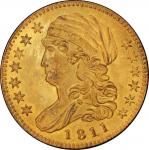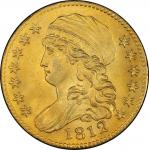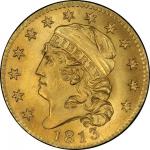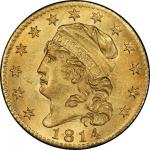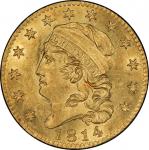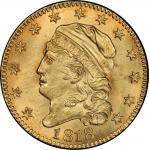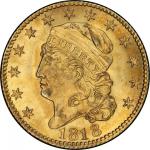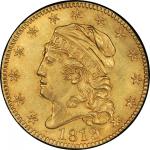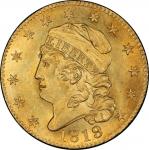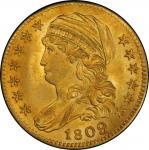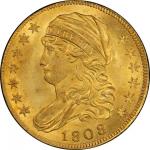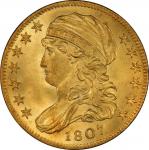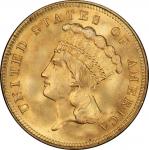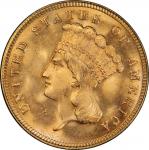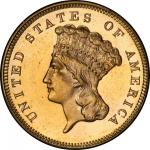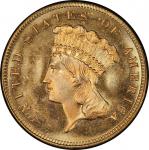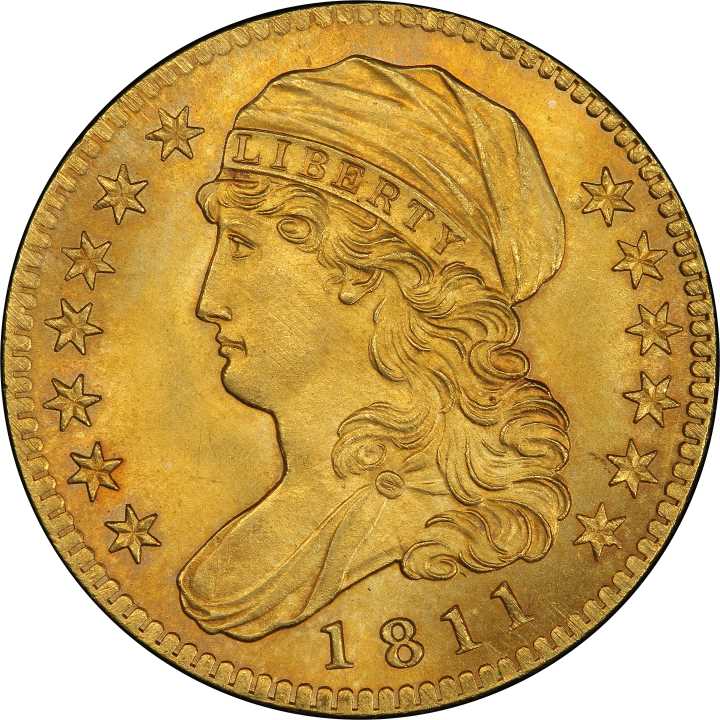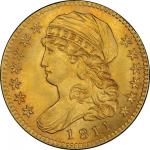“The best known to me. It was, and still is, my benchmark to compare against every other example of this type.” — Anthony Terranova, on the present specimen, 2015 Ringed in rosy toning and adorned with a stunning layer of rich luster, this is one of the most magnificent early half eagles in the D. Brent Pogue Collection. Its surfaces present a freshness and originality rarely encountered on an early United States gold coin of any denomination. Its grade, though lofty, does not adequately describe the remarkable aesthetic appeal this coin presents. The obverse is surrounded in sedate coppery toning that blends seamlessly into the rich golden centers, retaining pale blue highlights around several stars. The reverse color is still more impressive, with deeper violet-red peripheries, more pastel blue, and deeper yellow gold. The luster surpasses that seen on nearly any other coin of this type, in this collection of gems or any other, and the fields are as close to free of marks as any coin of this type. The wispiest and more trivial of lines might be seen in the correct light, along with a thin and short vertical hairline among the folds of Liberty’s cap and a jogging line in the upper reverse field below UNUM to the base of the eagle’s neck. A natural flaw, a tiny struck-through depression at the inside point of star 8, shows a couple of trivial nearby hairlines above it. Caused by a piece of detritus adhering to the die face or planchet at the moment of striking, this feature is not a contact mark and does not interrupt the nearly magical visual appeal. Likewise, a few straight lines below the eagle’s neck and behind his head are raised die finish lines and should not be confused for hairlines, which they are not. A minuscule nick on the edge above the left side of the second S in STATES is noted, though essentially invisible from either side. Some parallel adjustment marks are seen on Liberty’s cheek, crossing from northwest to southeast. Other vestiges of the same adjustment are well hidden in Liberty’s shoulder curls, the distant periphery outside the denticles around much of the circumference, and below the last two date digits. The incredibly bold strike has rid this planchet of any other evidence of the planchet adjustment process. A few raised artifacts in the field above the eagle’s head are remnants of spalling of the die face, as seen on the reverse die’s previous use in the 1810 BD-1 die marriage. Otherwise, the dies are both in their earliest and crispest state. Fine lapping lines are still evident on Liberty’s portrait and within the folds of her cap. Die finishing lines are mostly vertically oriented across the reverse fields, most evident above the space between the wingtip and the first A of AMERICA. Two related spikes emerge from the denticles above CA of AMERICA. Many of these aspects could not be seen or described without coins like this surviving. With any wear or significant handling, these important peeks into the die preparation and minting processes of the early Mint would be lost to modern scholars. James Kelly was one of the largest dealers of the era, by both volume and dollar value. The annual consignment invoices between Kelly and Burdette G. Johnson, who was then handling large portions of the collections of both Virgil Brand and Col. E.H.R. Green, amounted to dozens of pages, giving Kelly the chance to handle several 1913 Liberty Head nickels, the finest known 1793 Strawberry Leaf cent, and many other well known rarities from these collections. “Due to our volume of business, I can pay top market price,“ one 1950 Kelly advertisement proclaimed, offering “one of the largest stocks of numismatic material.” Kelly also conducted auctions, including the official sale of the American Numismatic Association conventions in 1950, 1951, and 1956, as well as sales held in association with the Central States Numismatic Society and other organizations. In the early 1950s he was perhaps the most important figure (with his agent, Paul Wittlin) in repatriating American gold coins from the vaults of Europe. Just three specimens of this design type have been graded MS-66 by PCGS; each of them is in the current catalog. The last time one of them sold at auction was 1984. Likewise, this sale includes the only MS-66+, the only MS-67, and the only MS-67+ of this type graded by PCGS. The most recent auction appearance of any of those three took place in 1999. This is the single finest 1811 half eagle seen by PCGS, and its appearance represents the first auction offering of this issue that firm has graded finer than MS-64. Early half eagles of this quality are extremely rare, but the opportunities to acquire them are even rarer. While the Mougey-Clapp-Eliasberg coin is untraced since it sold in the October 5, 1988, Stack’s sale, this example has strong claims to the title of finest known. PCGS# 507600. NGC ID: 25PG.

